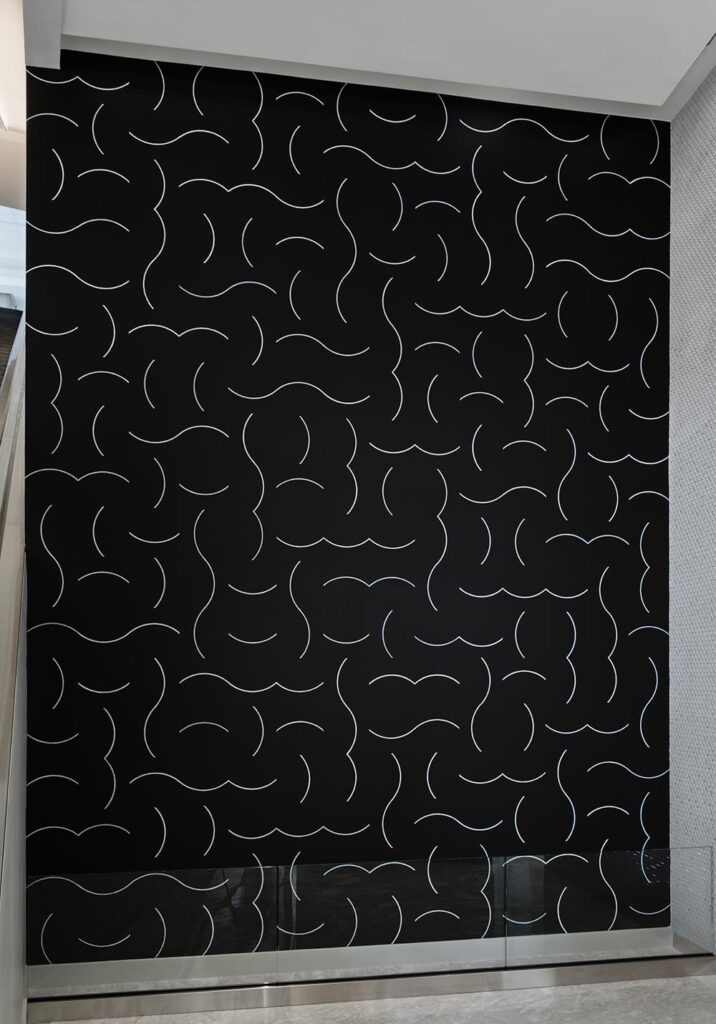
A 12-inch (30 cm) grid covering the black wall. Within each 12-inch (30 cm) square, one arc from the midpoint of one side (the direction of the arcs and their placement are determined by the drafter).
White crayon, black pencil grid, black wall
First drawn by: Jo Watanabe
First installation: Zabriskie Gallery, New York, November 1981
Installation at AT&T Stadium drawn by Abby Bagby, Andrew Colbert, Daniela Flint, Natalia Padilla, July 2025.
Patterns are everywhere. They shape how we move, speak, and think. Some emerge naturally; others are designed—deliberate, repeated, and refined. When we pause to notice them, we begin to see how patterns create order, mark time, and connect us to one another.
This idea is central to Sol LeWitt’s Wall Drawing #357, which was realized by a team of artists trained to follow LeWitt’s original diagram and instructions. A grid of 12-inch squares spans the black wall. Within each square, a white arc stretches from one side to the other. The direction and exact placement of each arc is determined by the draftsperson, making each iteration of the work slightly different due to this element of chance. Viewed from a distance, the individual arcs shift towards and away from one another in an intricate design of shapes and lines. Though the underlying structure is elegantly simple, it gives way to complex visual patterns—a hallmark of LeWitt’s rigorous vision.
Sol LeWitt was one of the most important artists of the 20th century. He is well known for his wall drawings, which are guided by concise instructions and respond to the architecture of their sites. His artworks are held in museum collections around the world, including the Museum of Modern Art, the Solomon R. Guggenheim Museum, the Art Institute of Chicago, and the Tate Gallery, London. His legacy continues to shape how artists think about pattern, process, and the power of a single idea.